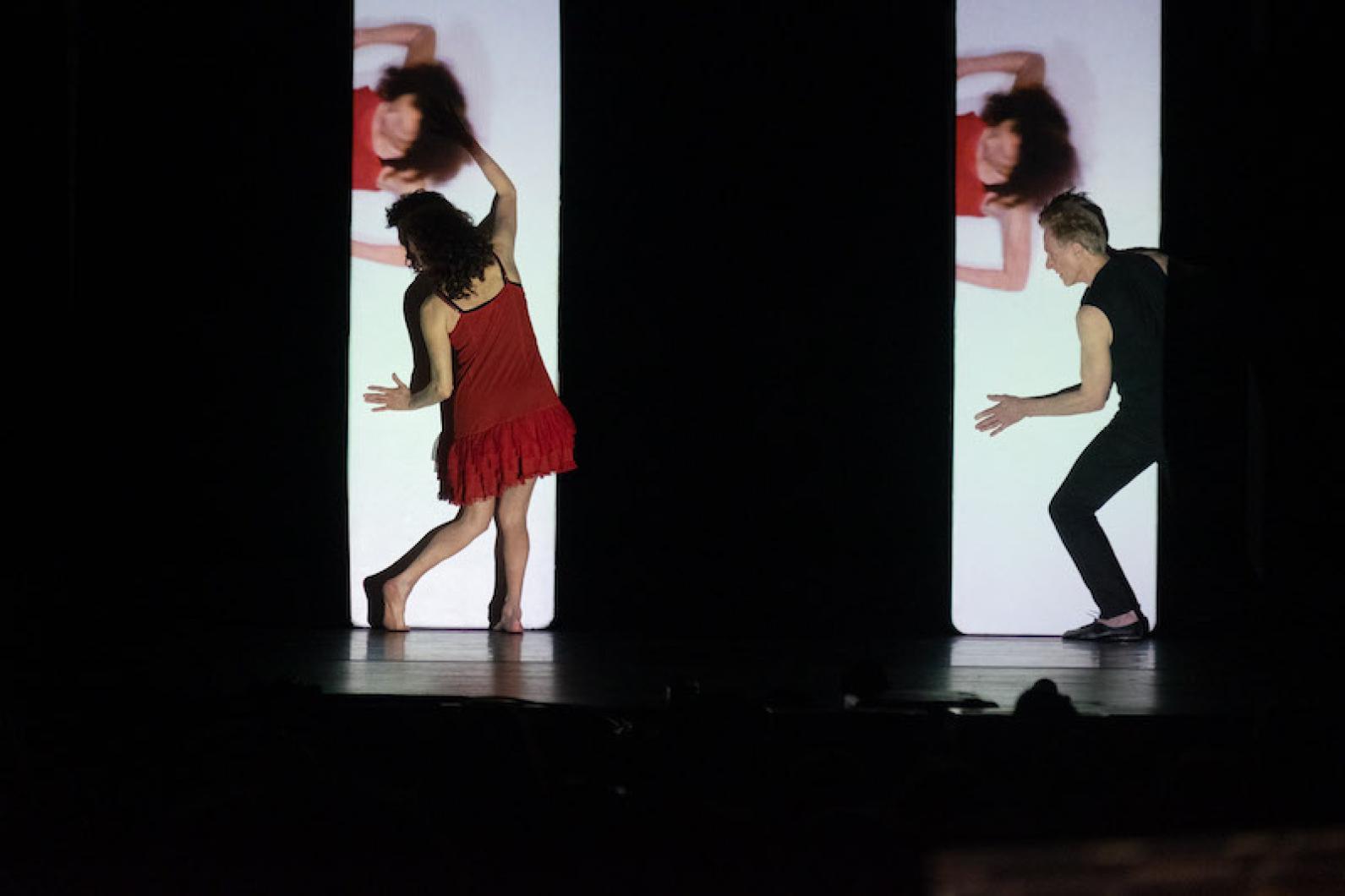What did we just see?
This was no idle question for the audience after Saturday’s Winter Yard performance by Bridgman|Packer Dance. The Hudson Valley-based company has just two members, but brought a virtual troupe of reality-challenging collaborators to the Martha’s Vineyard Performing Arts Center.
Magic lantern displays, combining lights and images, are centuries old, but by employing both pre-recorded and live-captured moving pictures, Art Bridgman and Myrna Packer have devised a distinctly postmodern blend of technology and dance. During two pieces on Saturday — Bed Table Mirror and Voyeur — the duo held some 125 Island audience members in thrall.
Bed Table Mirror explores the neuroscience of dreams, both explicitly and subjectively, through the dancers’ movements. Tossing, turning, tumbling and freezing in place, Mr. Bridgman and Ms. Packer moved on and off folding tables—the kind often used at schools and farmers’ markets, but gleaming white—that served as beds or projection screens, depending on whether the tables stood atop their legs or on their sides.
At times, the dancers on stage were doubled, tripled or quadrupled by their video-captured selves, then left their multiplicates behind to move freely away. The force-multiplying impression was exhilarating and bewildering in equal measure, as the viewer’s eyes darted between live and reproduced reality.
In both Bed Table Mirror and Voyeur, video cameras and front and rear-screen projections created the moving-picture equivalent of a muralist’s trompe-l’oeil effect. In Voyeur, the effect became kaleidoscopic as images moved rapidly across the screen.
While both works are compelling, Voyeur has received the most attention because it is based on the work of American painter Edward Hopper. But this is not the Hopper of Nighthawks (1942), who observed people in public moments, as through the plate-glass window of a diner. The Hopper who makes Bridgman and Packer dance is the artist we might be less comfortable admiring: the peeping Hopper of Night Windows (1928).
The dancers are working from his paintings that spy on private moments—women dressing or vulnerably in undress, lonely people in rented rooms, solitary diners eyeing other singletons. Is one a predator? It’s an open question.
While Bed Table Mirror is accompanied by a rhythmic musical score, music only occasionally bubbles up in the sonic environment for Voyeur, in which we are more likely to hear an old-style rotary phone dial, gunshots from a radio serial or indistinct voices in another room.
The Voyeur set recalls the composition of many Hopper paintings, with their vertical paneling—narrow on the right, wide on the left. The slide projections that clothe the set in clapboard, brick or stone, as well as the Hopperesque interiors, were captured during a shooting session in Maine.
Mr. Bridgman and Ms. Packer’s performance on Martha’s Vineyard came more than four decades after they made their debut at the Yard in 1978. In a question-and-answer session following Saturday’s show, they said that year was also when they first worked with David White, who directed Dance Theater Workshop in New York city long before becoming artistic director at the Yard in the 2011.
In the final Winter Yard performance of 2019, Stefanie Batten Bland brings her work Bienvenue Welcome to the Performing Arts Center on April 6. Vineyard schoolchildren will participate in creating the set.
Visit dancetheyard.org for tickets and more information.









Comments
Comment policy »